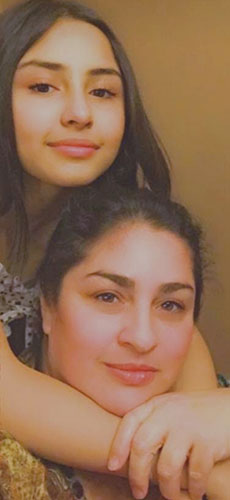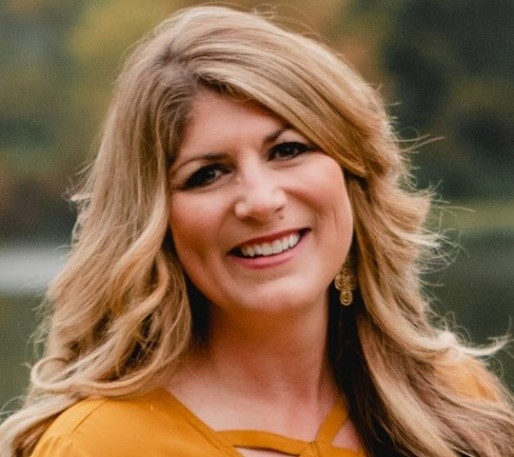Bleeding Disorders in Women
Bleeding disorders are conditions in which the blood does not clot normally because certain proteins in the blood are missing or do not work properly. Learn the signs and symptoms and read stories of women and girls living with bleeding disorders.

Up to 1.6 million (or about 1 in every 100) women and girls in the United States have a bleeding disorder, and many are unaware of their condition. The bleeding disorder community includes people living with von Willebrand disease (VWD), hemophilia, platelet disorders, and other rare bleeding disorders (called rare factor deficiencies). While men and women can both be affected by bleeding disorders, these disorders can pose unique problems for women because of their impact on reproductive health, including heavy menstrual bleeding.
What are the signs and symptoms?
Heavy menstrual bleeding (heavy periods) is one of the most noticeable signs of a bleeding disorder in women and girls. Other signs and symptoms can include the following:
- Nosebleeds that occur for no apparent reason and last longer than 10 minutes or need nasal packing (gauze or other material inserted into the nose to control bleeding) or medical attention.
- Easy bruising that occurs with very little or no physical injury and may occur often (one to four times per month). The bruise is typically larger than the size of a quarter and has a raised lump (not flat).
- Longer-than-normal bleeding after an injury. For example, after a cut to the skin, the bleeding lasts more than 5 minutes.
- Excessive or longer-than-normal bleeding after a medical or dental procedure or during and after surgery.
- A history of muscle or joint swelling with minor or no physical injury.
- Heavy or rapid and uncontrollable bleeding after childbirth or miscarriage that requires medical treatment.
Some women who have heavy periods and/or other bleeding symptoms may not be aware that it could be a sign of a bleeding disorder. They may think that the symptoms they experience are normal if other women in their family also experience heavy bleeding. It’s important to know there could be a reason behind their bleeding symptoms and talk with their doctor.

A menstrual chart can help women and girls track their period to help determine if they are experiencing heavy bleeding.
Download this menstrual chart to help you keep track of your blood loss during your period. Download the Spanish version.
Bleeding disorders can be treated. Talk with your doctor if you experience any of the signs and symptoms.
Untreated bleeding disorders can be dangerous and can lead to other health problems and medical procedures that could be avoided. It’s important for women to talk with their doctor if they are experiencing one or more of the signs and symptoms. Effective treatments are available to help women manage their symptoms and improve their quality of life.
The Better You Know campaign, developed by the National Hemophilia Foundation in partnership with the Centers for Disease Control and Prevention, has free resources in English and Spanish for women and girls who are experiencing symptoms but have not been diagnosed. Resources include an online risk assessment tool and menstrual chart to help women and girls learn if they might be at risk for a bleeding disorder; materials, such as a the teen brochure, to learn more about the signs and symptoms; and tools and information to help women and girls talk with their doctor about their bleeding symptoms
Read stories of women living with a bleeding disorder and learn how it has impacted their lives.
Chelsee’s Story
Chelsee was a healthy and active child who enjoyed playing sports, especially cheerleading. She was a “flyer,” one who is lifted in the air during stunts. The only atypical thing in her life was that she would get heavy nosebleeds, which were sometimes so bad that she would pass out. When Chelsee was 7 years old, she was diagnosed with platelet storage pool disorder, a condition where parts of platelets (blood cells that help the blood form clots) are absent, reduced, or unable to enter the blood stream, impacting the platelets to form clots and stop a bleed.
Chelsee’s diagnosis was a surprise, but it opened new opportunities that she wouldn’t have known about or participated in if it wasn’t for her bleeding disorder. Read Chelsee’s story.


Candace’s Story
Results from a blood test showed that Candace’s life was in danger. Her doctor called to let her know that her platelets (blood cells that help form clots to stop bleeding) were extremely low and that she needed to go to the emergency department right away. For adults, a normal platelet count is between 150,000 – 450,000 per microliter of blood. Candace’s platelet count was at 7,000.
At 27 years old, she was diagnosed with immune thrombocytopenia, a rare bleeding disorder. Read Candace’s story.
Janine and Daniela’s Story
Large colorful bruises, severe nosebleeds, and heavy periods have been a part of Janine’s life since she was a young girl. Like so many other women and girls, she didn’t know that these were all symptoms of an undiagnosed bleeding disorder. It wasn’t until her daughter, Daniela, was born and diagnosed with a bleeding disorder that Janine learned that she had been experiencing symptoms of one all along.
Despite challenges related to their bleeding disorder, Janine and Daniela find joy in giving back to their bleeding disorder community. Read Janine’s and Daniela’s story.


Carrie’s Story
Carrie is no stranger to hemophilia. She, her father, and her son, Nicholas all have hemophilia. Carrie was diagnosed when she was about 23 years old. Her diagnosis wasn’t as much of a surprise as it was a reason to explain the symptoms she had experienced in her life up until that point.
Carrie shares how hemophilia has impacted her family and what advice she has for parents of children with bleeding disorders. Read Carrie’s story.
Shellye’s Story
Hemophilia has been in Shellye’s family for five generations – from her great grandfather down to her nephew. Although Shellye and women in her family experienced bleeding issues, hemophilia was never considered as a possible reason for their bleeding.
When Shellye was in her 30s, she was tested and told that she may be a “symptomatic carrier” for hemophilia – a term for women who are carriers for hemophilia and have bleeding issues. However, a treatment plan was not made for her bleeding symptoms. It wasn’t until she was 45 years old when she received a diagnosis of “mild hemophilia,” which changed the way healthcare professionals viewed her symptoms. Read Shellye’s story.


Brooke’s Story
Brooke was diagnosed at 6 months old with the most severe form of von Willebrand disease (VWD). Before her diagnosis, no one in her family knew anything about the condition. But after she was diagnosed, her family members, including her mother and three older brothers were tested, and they were all diagnosed with a milder form of the condition. Read Brooke’s story.
Brandee’s Story
Brandee learned she had von Willebrand disease (VWD) at the age of 12 after experiencing extremely heavy periods. According to Brandee, when she started her period, it never stopped. “It was extremely heavy, so my parents took me to my pediatrician, and she ran a bunch of tests and said that she was going to have to refer me to a hematologist (a doctor specializing in blood diseases) because she thought I had VWD, which I did. That’s how I learned that I have it. It was a surprise.” Read Brandee’s story.

